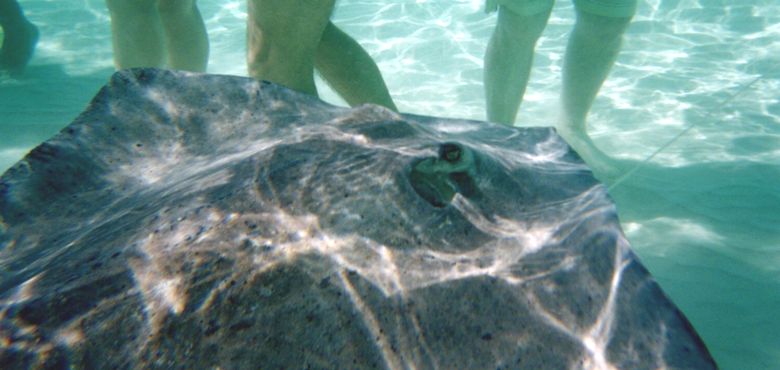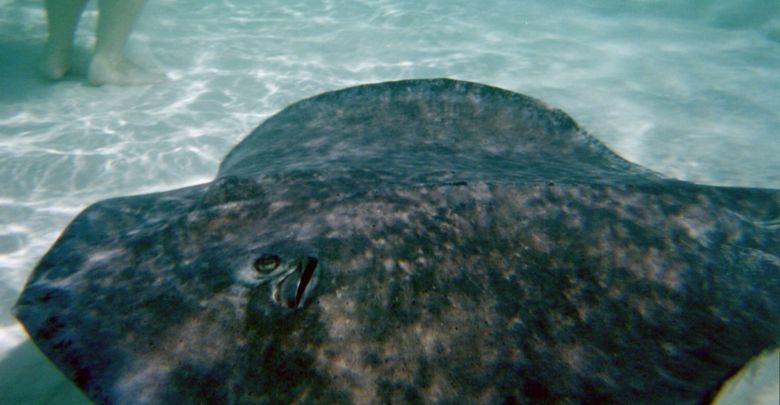Arrival at Stingray City
At Grand Cayman, we took a boat ride about 20 minutes out into the sea to what is essentially a sandbar, where we disembarked and stroked, held, and fed sting rays! Terrifying at first, once you get used to creatures larger than bathmats gliding by and rubbing up against you it was wonderful and fascinating! The females are the massive ones; the males are barely larger than a Frisbee!
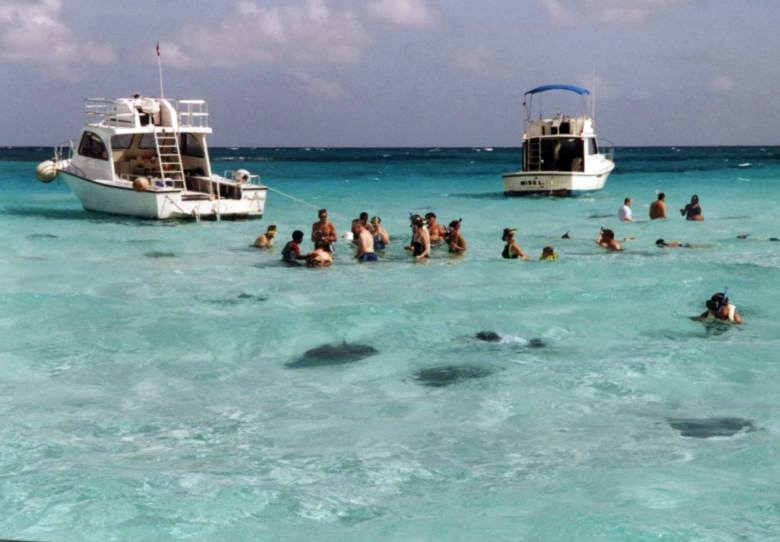
When we arrived this was the scene
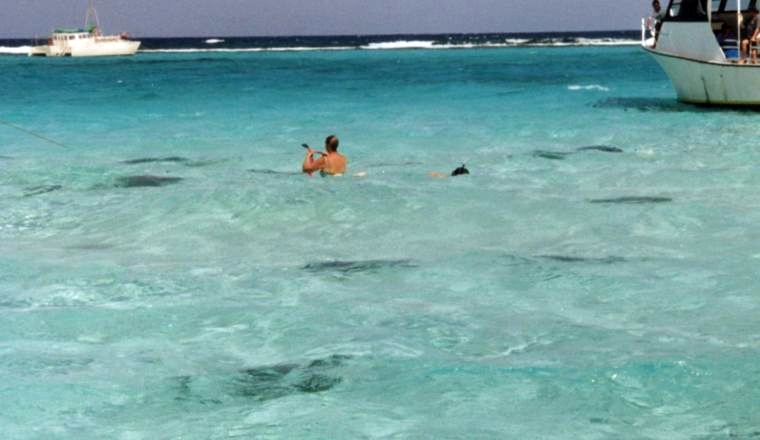
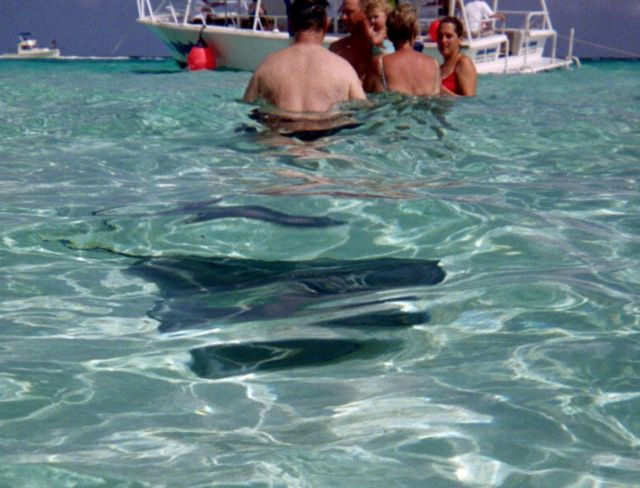
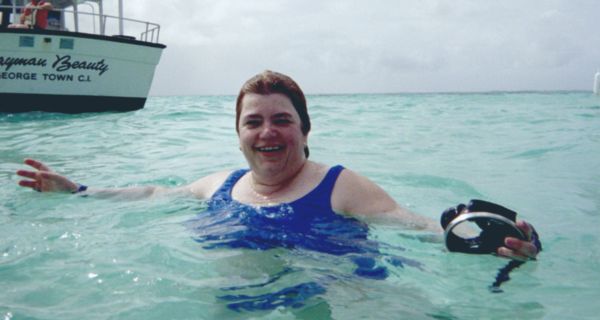
The water was kind-of deep, and we had to be very careful
not to float up and then step down on a ray.
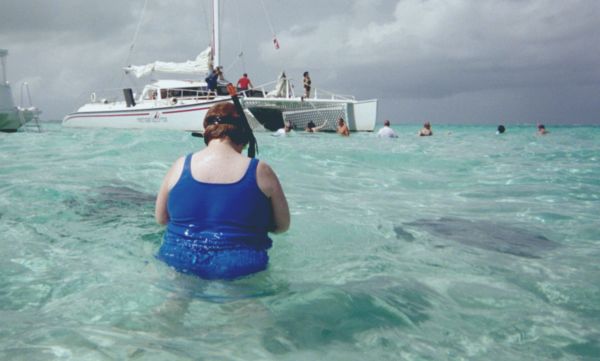
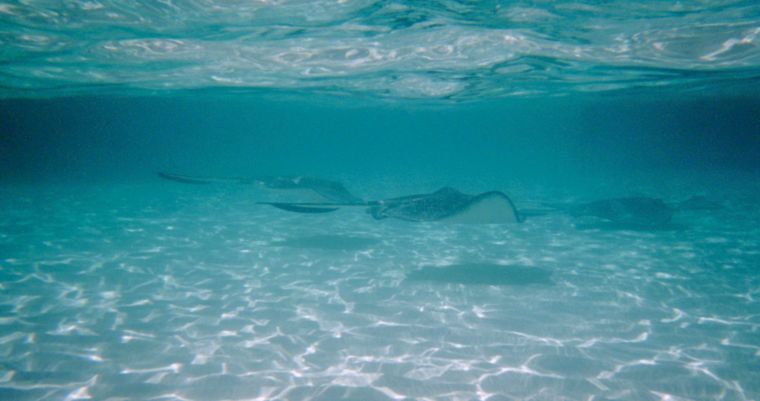
This is what it looked like under water!
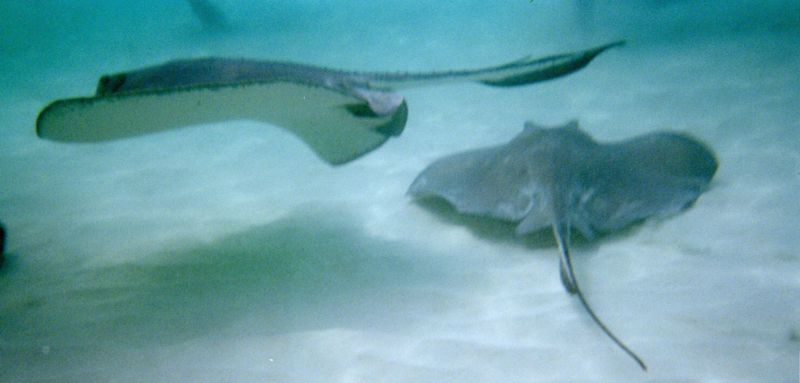
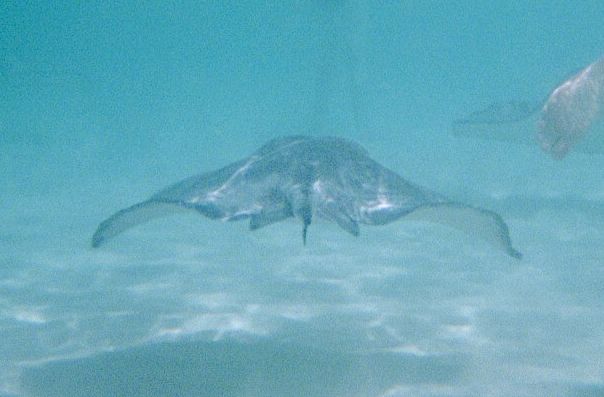
Rays swim very differently compared to other fish. They are propelled through the water with their powerful, wing-like pectoral fins which ripple and flap. Their large pectoral fins also let them glide through the water. It was shocking at first, and then merely weird when the rays would glide by and brush their wing against your legs. Some people call them sea-kitties, because they rub against you, and glide between your legs when they want to be fed! Not much like kitties, though they are soft and smooth and wonderful to touch. Their undersides are velvety, and their top skin is about half-way as rough as a cat’s tongue.
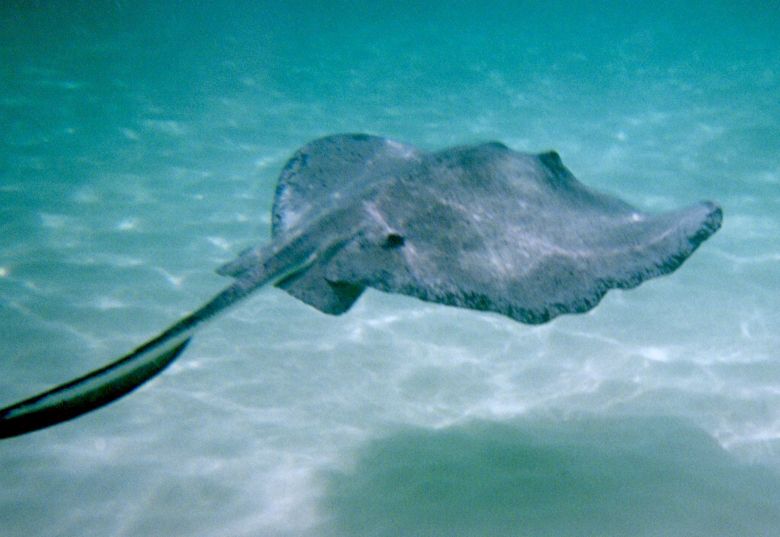
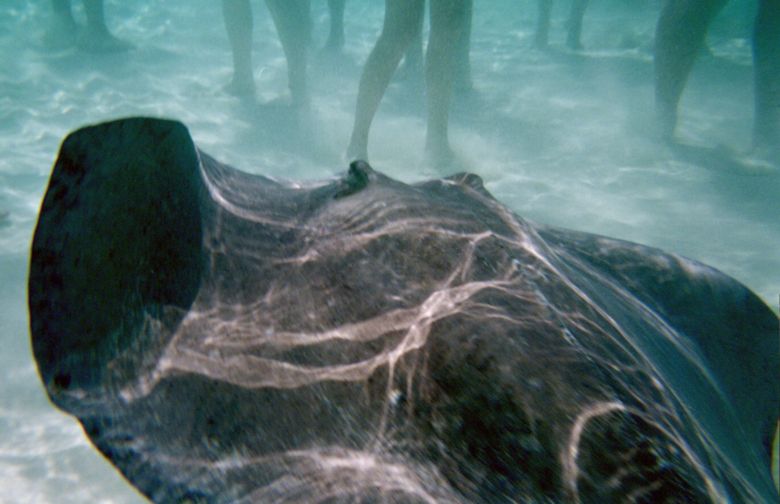
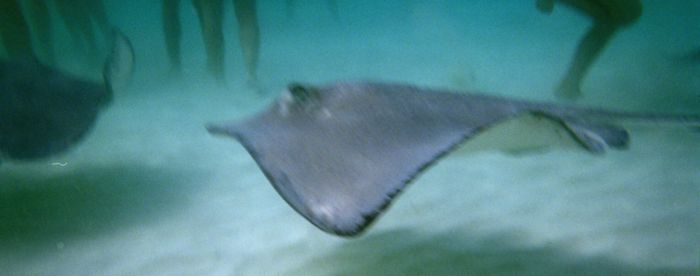
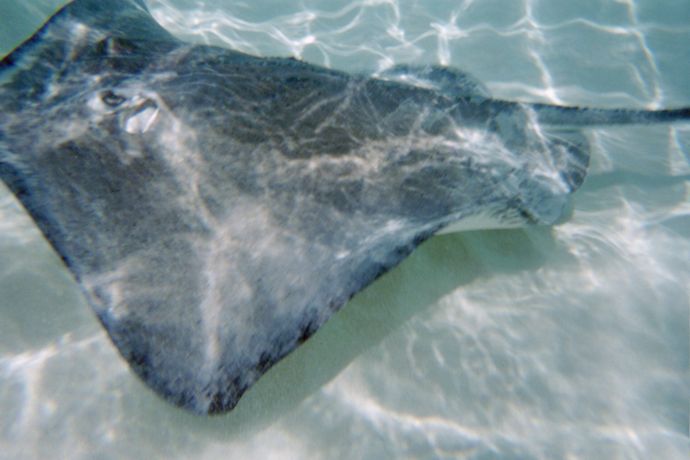
Rays have a flattened body shape and an elongated tail. The pectoral fins are large and connected to the body to form the ray's “disc.” Even the ray’s skull is flattened. Rays belong to the group of fishes that includes the sharks. The class Elasmobranchii have no bones, only cartilage. Notice too, the rays come in all different shapes!
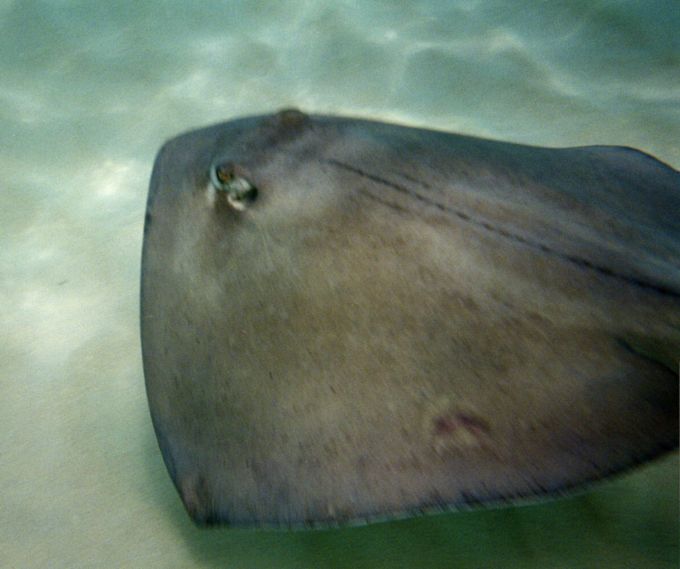
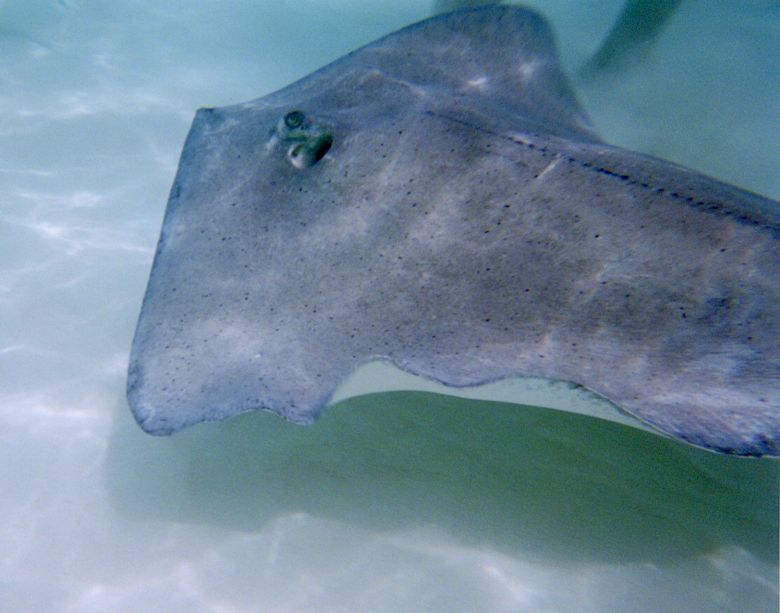
The female rays are quite large
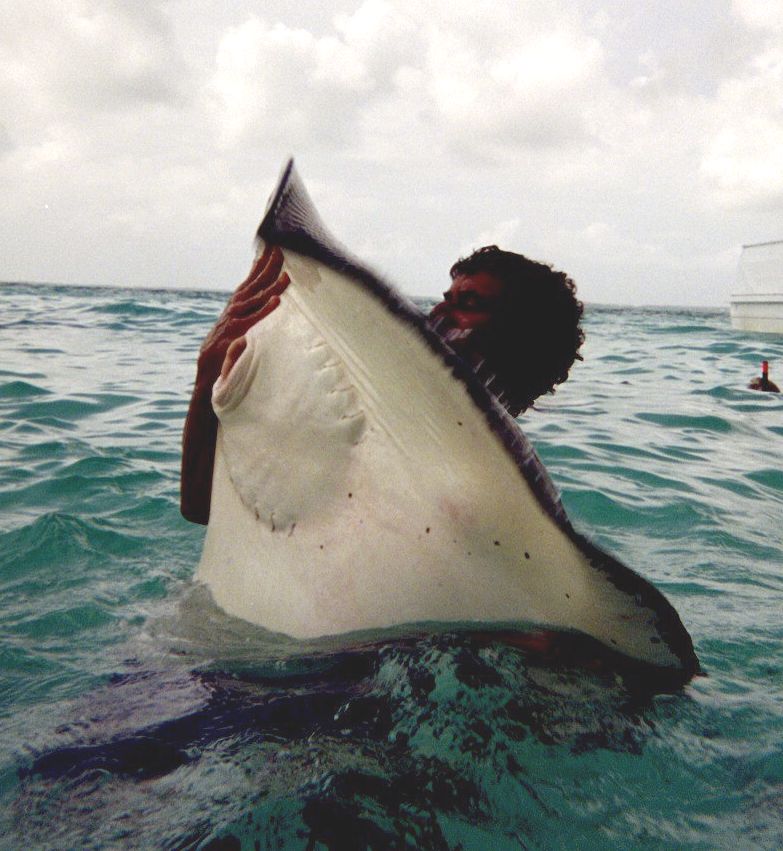
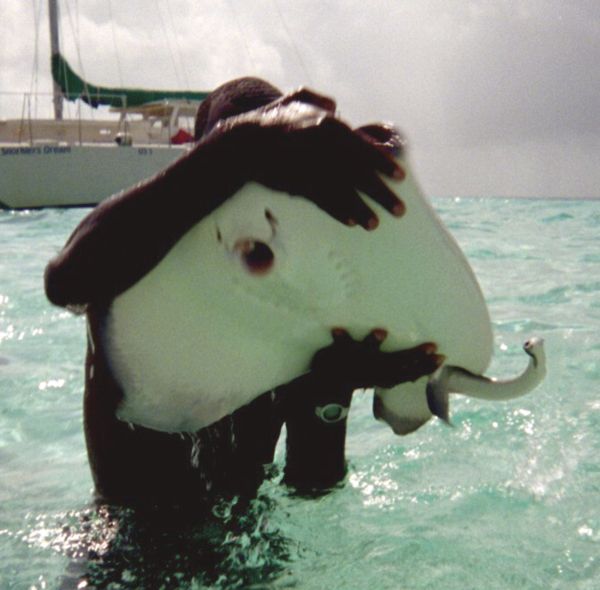
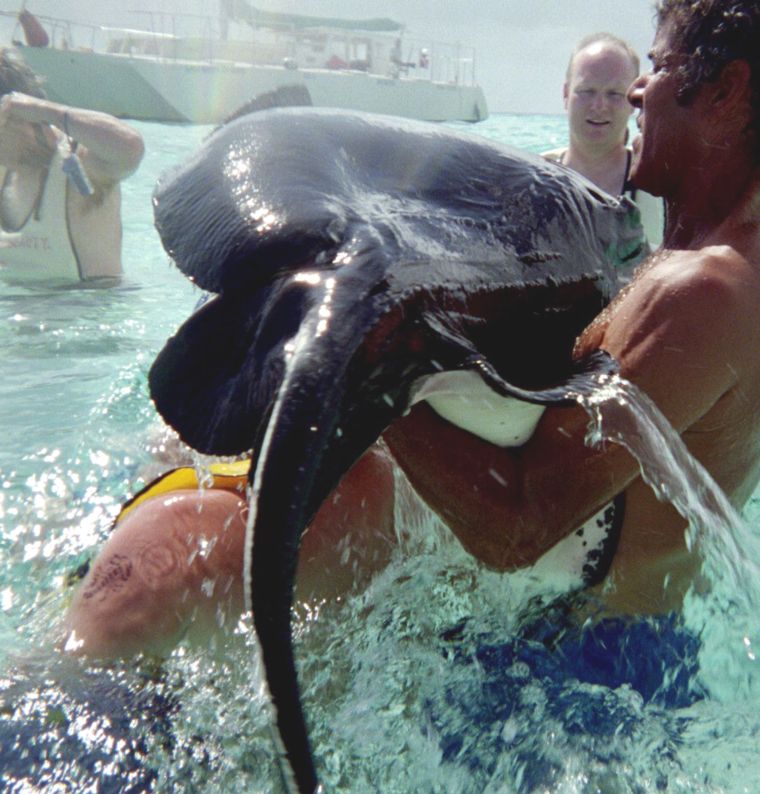
One of the things the guides do is hold the rays up and rub them against a tourist’s back, or plant one on top of the tourist’s head. This one is obviously a female! (The ray, not the tourist!)

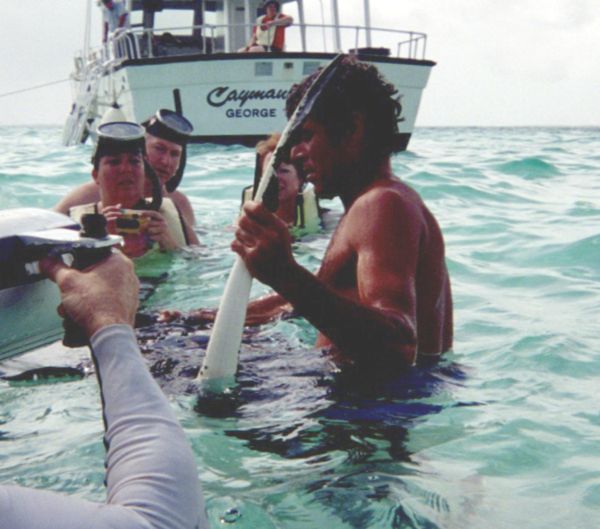
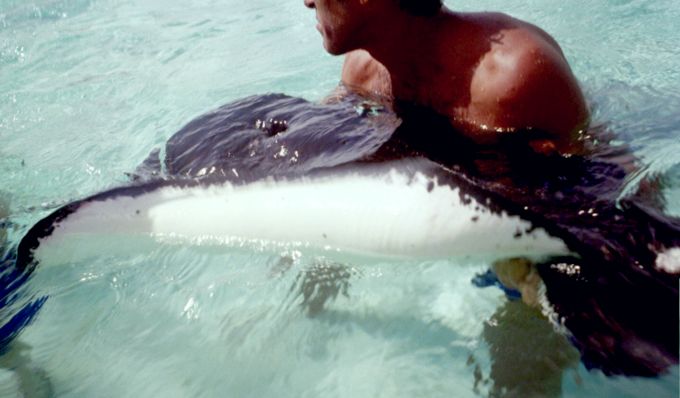
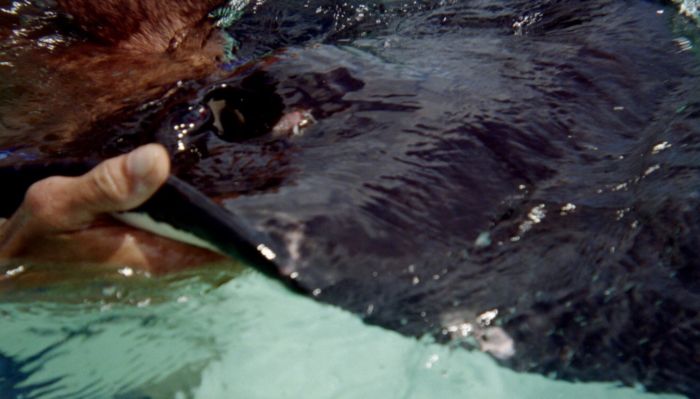
The males are much tinier!
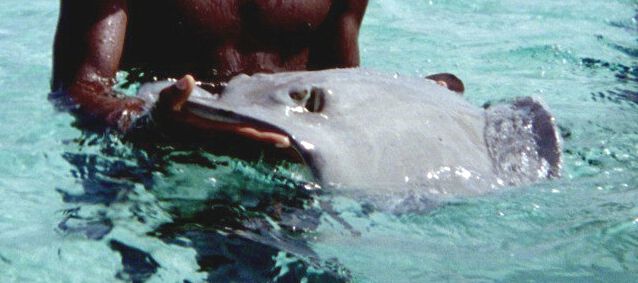
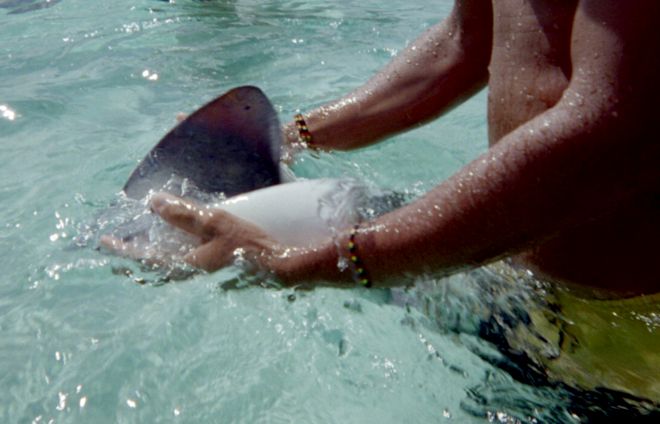
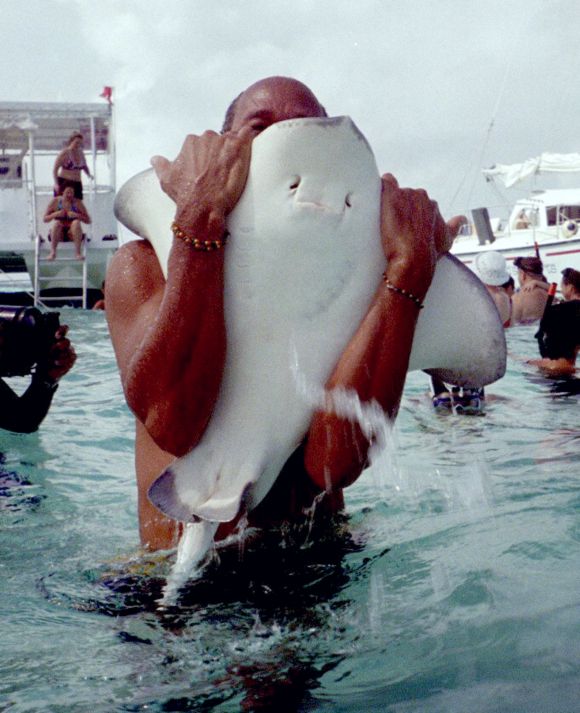
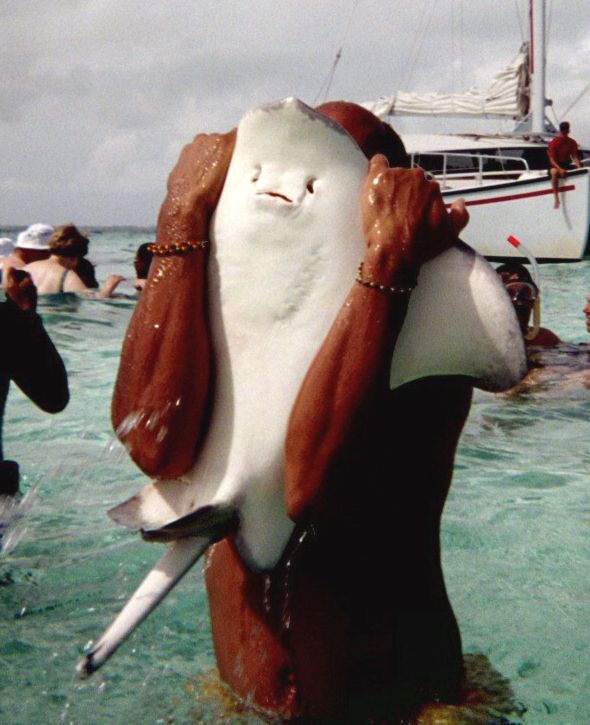
Michael Ray plays with Rays
Our guide said they are stupid, having only wee little "dinosaur brains" — but on the web it said that rays have a high ratio of brain weight to body weight; they are probably very intelligent, even smarter than sharks. They are known to be very curious, and were not afraid of the tourists, whom they associate with food.
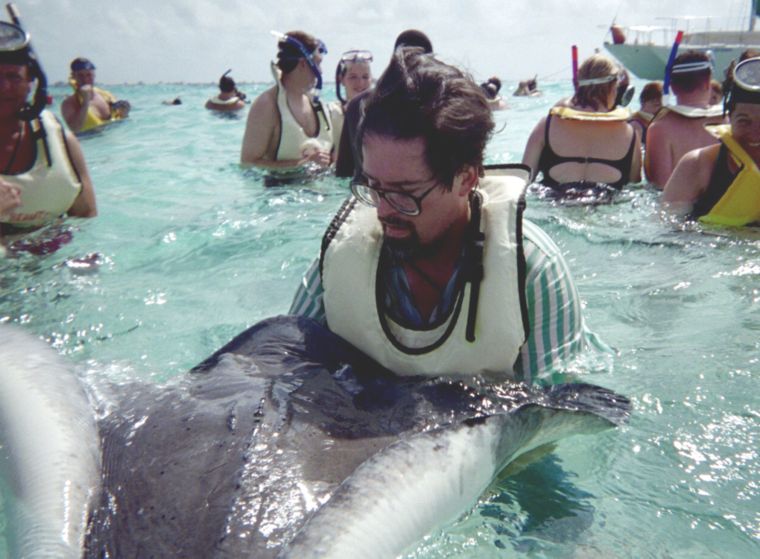
We also got to “hold them” — not actually lifting them out of the water (the big females weigh more than 100 pounds — and are impressively muscled!), but by supporting their bodies underneath with our arms. Interesting, their eyes are on top, their mouths on the bottom, so they can't see what they eat! We fed them cut-up squid. The guide said they have a suction of about 5 Hp and no teeth (although on the web it says they have blunted teeth called grinding plates. Mike said he got a bite or pinch from a couple; he fed several. Elenor only fed one.
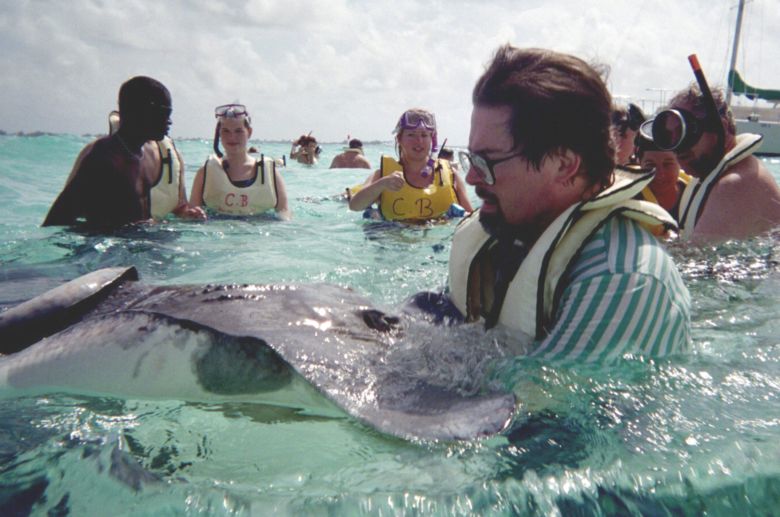

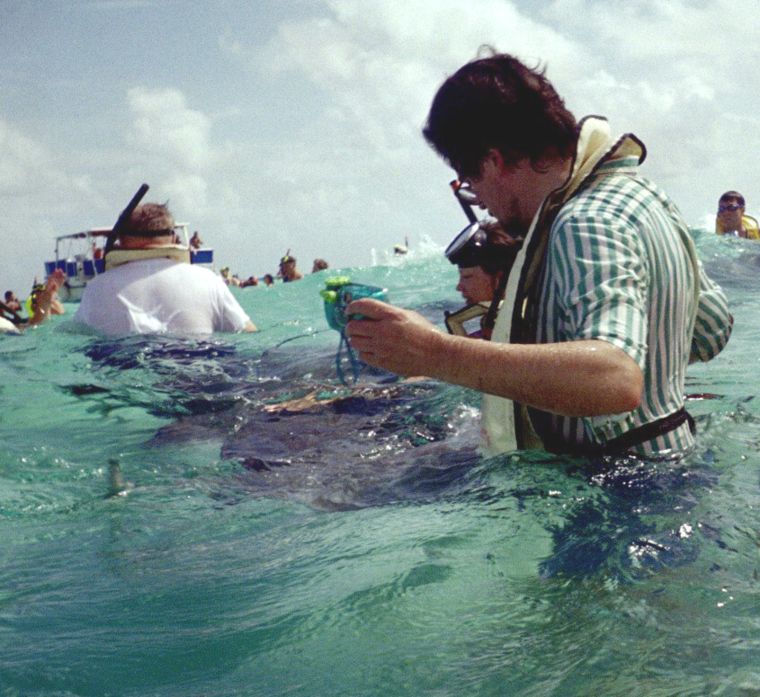
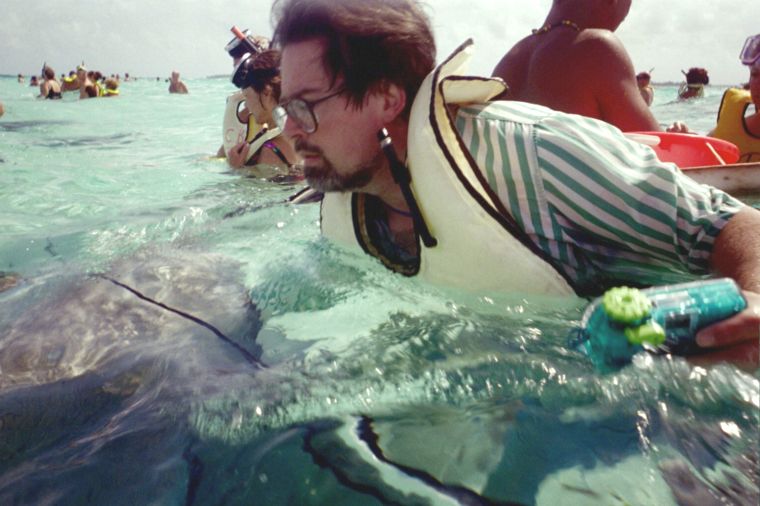
Stingrays have long, slim, whiplike tails armed with a serrated, venomous spine. A stingray lashes its tail only as a defensive measure when it is caught, stepped on, or otherwise disturbed. (Of course, the Sting Ray City rays LIKE people: people mean squid tidbits. So they are not defensive generally with people, just don't step on them!) When wading in shallow waters, people should shuffle their feet to avoid stepping on a buried stingray.
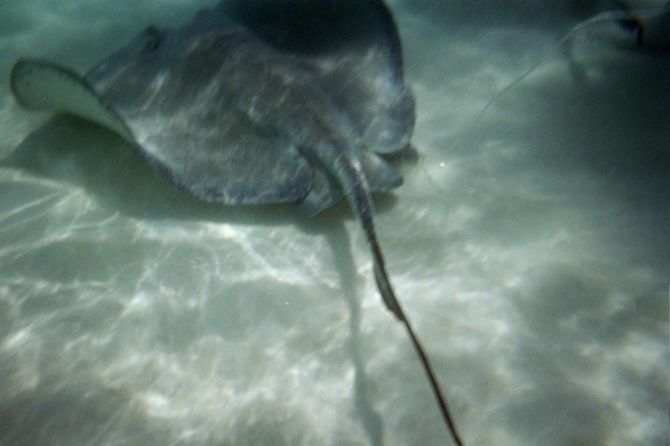
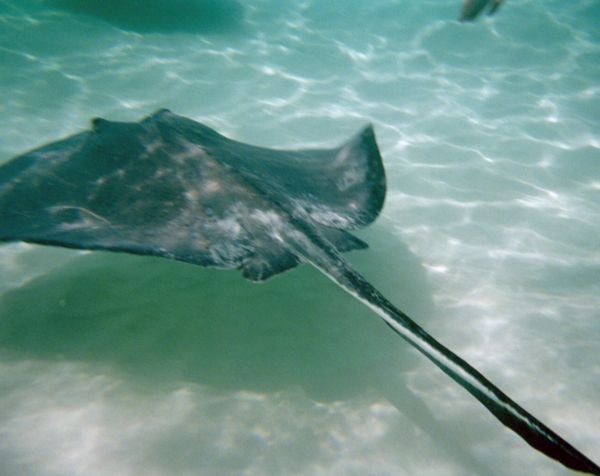
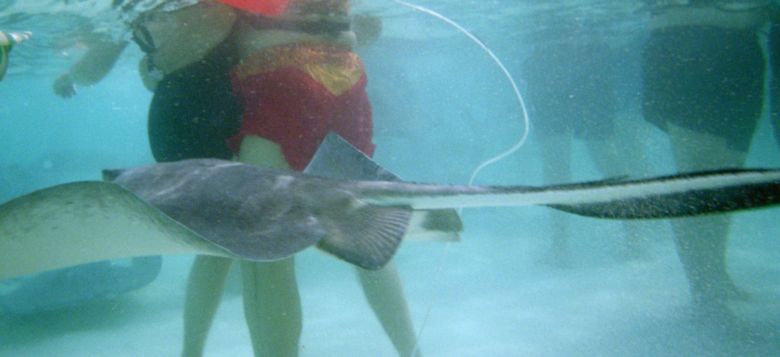
You can just see the little barb on the top of (his?) tail.

